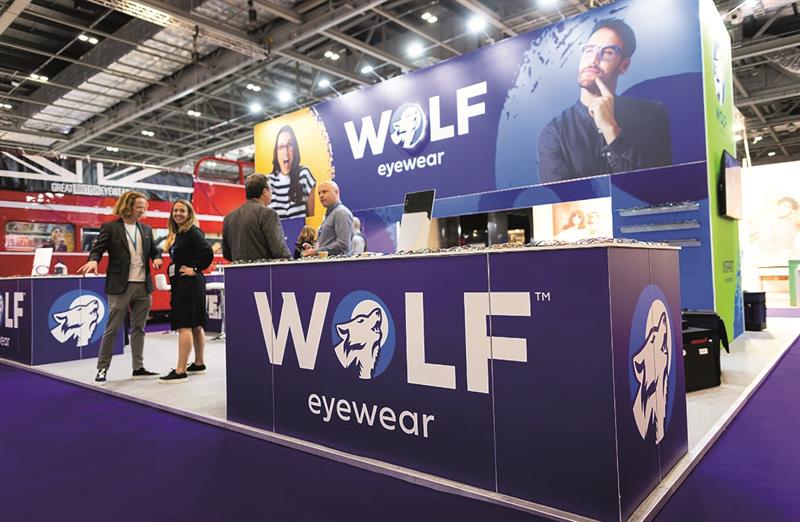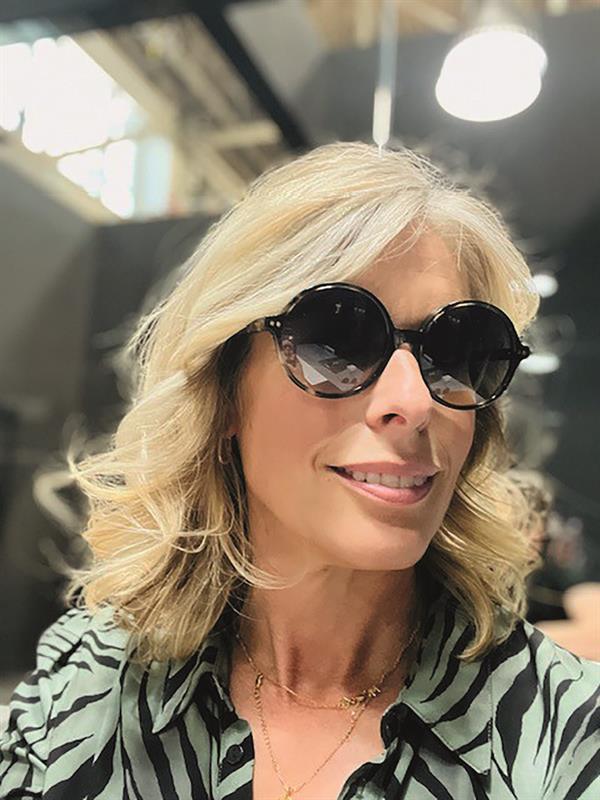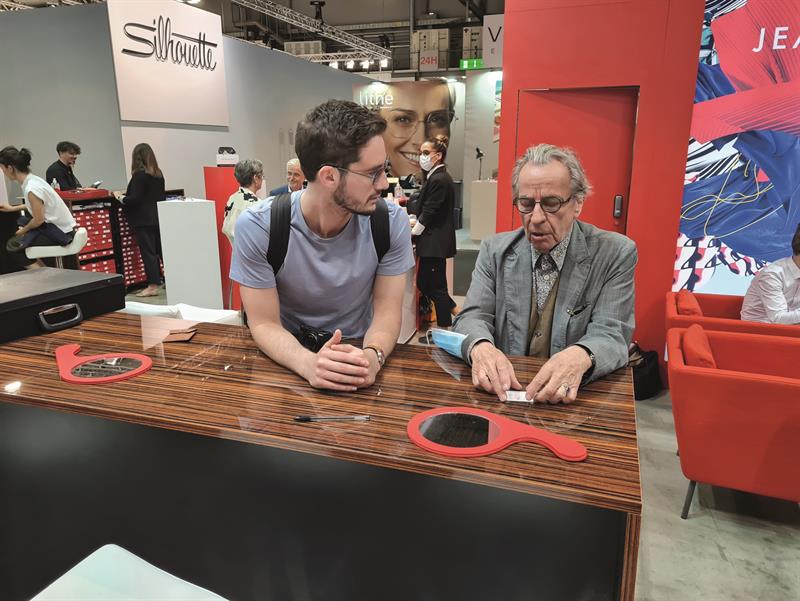
After successive exhibitions in London, New York, Milan and Munich, the optical profession has an opportunity to take a collective breather before thinking about going to Paris in September.
Covid-19 forced 100% Optical and Opti to move from their usual spots in January to later in the year, which created a congested calendar with Vision Expo East and Mido occurring at their normal times.
This meant exhibitors did not necessarily launch new products. Instead, they showcased eyewear, equipment, ophthalmic lenses and contact lenses that had already been released to the market. Albeit, displayed for the first time in-person at a major industry event.
The financial burden and logistical headache of exhibiting back-to-back in different countries was felt this year and, while some companies attended all of the exhibitions, many were selective about which they spent money on.
Each show had a more local feel and exhibition floors were quiet compared to pre-pandemic levels, which was to be expected given the busy calendar and ever-present concerns about Covid-19. The general feedback from exhibitors was positive with most welcoming the opportunity to reconnect with clients rather than expecting to sign lots of new orders.
Appetite to connect
British frames supplier, Wolf Eyewear, told Optician it was important to support 100% Optical and see its customers after two years. Tom Wolfenden, director at Wolf Eyewear, said: ‘We expected people to want to explore trade shows again and we felt that was the case, particularly at 100%. They wanted to have that social feel and connect with people after a long period of time. People felt safe and it was the right time to have a show again. We didn’t have expectations of business but we had expectations to see people. We were fortunate that business was very good as well.’
Wolfenden speculated that other companies might not have attended 100% Optical because it was not at its usual time and did not align with cash flow budgets or global strategy. Wolf Eyewear also exhibited at Vision Expo East and Opti, which presented different opportunities for the company. 100% Optical was Wolfenden’s ‘best and busiest show ever’ as customers wanted to connect and see the latest frames, which resulted in new business and consolidation of existing accounts.

Wolf Eyewear thought it was important to support 100% Optical
‘We’ve been to Opti four times and it’s nice to meet new people, learn about different markets and see what does and doesn’t work. We’ll go again next year. We’re building our market there. It isn’t as strong as it is in the UK so therefore the stand wasn’t as busy. New York went well too. People hadn’t heard of us or they had on social media so they came to us and we had good conversations.’
Wolfenden said the industry’s view of and approach to trade shows has changed with people doing more research and planning on what they want to spend and when. ‘They read up a lot on the brand before they make a decision. It’s not “I’ve spotted something cool, let’s go and buy it,” it’s more “I’ve seen you on social and made contact with a rep, so would like to come and see you at a show and make our decision there.” Shows are still important, but so is the lead up and visibility work,’ he said.
However, Allan Petersen, founder of Danish eyewear company Monoqool, said the cost efficiency of trade shows over the last five years has diminished. He told Optician that prior to Covid-19, the company had contemplated reducing, or completely stopping, its exhibition activities.
‘Covid just helped us take the leap. At the moment, I don’t see us spending much, if any, part of our marketing budget on the trade shows. Unless the show organisers come up with new revolutionary ideas to make the fairs more interesting to visit and more effective as a marketing tool for the exhibitors, I doubt that there is a bright future ahead for the trade shows.
'On top of this, we struggled to get refunds from the organiser of the Silmo show due to their financial difficulties, which just strengthened our resolve to strive without the trade shows. Only time will tell if we are right or not,’ Petersen said.
Identifying the innovators
For optical practices looking to find the latest product innovations and improve its service offering, there was still much to discover. Michelle Beach, optometrist and director of Park Vision, attended Opti in Munich because its where she can catch up with British companies and seek out new brands.

Beach, pictured right, told Optician she was not sure what to expect as a result of the densely packed trade show calendar. ‘I find Opti easy to get to with Germany’s efficient underground system. Munich is a great city and the exhibition is always well organised and laid out in a way that is very easy to navigate. Frames, tech, contact lenses and accessories all get their own halls so you can spend time on each without getting too distracted.
'We decided to bring innovative new brands back to Park Vision because why do we want to be stocking the same brands of eyewear as everyone else? We are always looking for niche independent brands that will sit alongside some of the big names in our frame studio,’ she explained.
Beach added that although the event was quieter than previous visits, it was beneficial as she could speak to more exhibitors. Although, she noted she still did not manage to get round the entire show in three days.
Beach enjoyed Tom Davies’ colourful acetate kitchen and his new range that she thought would work alongside his bespoke collection. ‘I always go and say hello to the suppliers I know from the UK. Tom Davies, William Morris and Wolf Eyewear were all exhibiting. They always impress me with their passion for their eyewear. All parties are constantly innovative with new product and keeping things fresh,’ she said.
Beach explored the Opti Boxes area, which showcased independent eyewear designers, and was impressed with the levels of passion and innovation on display. ‘In the contact lens and tech halls, dry eye was a big feature and, as a practitioner, it is a growing concern in the clinic. New dry eye light machines, masks and drops were on show and we came home with many new samples to trial, all offering a slightly different approach to the existing ranges we currently have access to.’ An electric heat mask for dry eye treatment was on Beach’s radar before attending, which offered a constant temperature, lid massage and a wellness treatment option for patients.
‘We are very excited to have three new eyewear brands coming back to Park Vision that will be exclusive to us in the UK. A sustainable brand that is made from recycled water bottles, the cases and cloths. Secondly, a colourful frame collection that sits at an affordable price for second pair options. We are aware that we need to offer all price ranges in store, particularly as many are struggling with the cost of living escalations. A cheaper range doesn’t have to mean you have to offer poorer quality and we are very excited to add this range to Park Vision’s shelves. We have also chosen a fabulous new kids’ range that is colourful, practical and super cute.’
Beach said if optical practices do not support these exhibitions by attending then they would not happen, which would be ‘tragic for all aspects of optometry.’ She commented: ‘We need to stay current, we need to stay aware of what is happening outside our practice walls and we need to offer our patients the best and innovative products. Exhibitions like Opti cater for all of this. You come away having fallen in love with the profession again and I think we all need an injection of love sometimes, particularly after a tough two years.’
Ahead of the game
Robert Sands, practice manager at Spectacle Factory in Preston, attended Mido in Milan and, as a fan of the European trade shows, hoped for a normal outing. ‘It was my first time travelling since Covid so it was all new and different. In the end, it was really good and exceeded my expectations. I usually go to one of them and alternate each year to get a bit of variety. They all have slightly different aspects to them so it’s worth attending each one,’ he said.
Sands wanted to find exciting frame designs, identify which direction the market was heading and invest in new technologies to bring back to practice and deliver the best service possible.
‘There were a couple of brands that we’ll be the first, or certainly first two or three, in the UK to have. A cool brand called Gast, which are very affordable, high quality acetate frames made in China but designed in Milan. It was interesting chatting to the designer because I think he’s got an interesting business model. We also picked up Jean Philippe Joly, who I’ve been watching closely on Instagram for a while. I love his designs so it was cool to meet him in person.
'I was slightly disappointed in the lens side of things, which was considerably smaller than it had been in the past. I think that was partly because of Covid but also lens manufacturers realised that people aren’t going to change their lens brands too much by going to these shows, even though it is what I go for. It could be a trend that the lens manufacturers are less involved in these shows and it’ll be more about frames,’ Sands observed.

Robert Sands (left) chats to Jean-François Rey at Mido
The event was as busy as Sands would have liked it to be. As concerns about Covid still existed, he was pleased that Mido was busy but not heaving on the Saturday he attended. ‘There weren’t as many halls so that might have condensed people down. Every stand that I visited there was zero delay in meeting people, sitting down and ordering what I wanted,’ he said.
Sands added that he was a huge believer in trade shows and, although he liked building relationships with sales representatives, he’s aware that if they visit his practice they’re also visiting others. ‘By going to trade shows, you can discover things that some might not have access to and that’s exciting. I could go there and not buy anything because of the inspiration from meeting people at the hub of eyewear design. Seeing people’s attitudes to eyewear on the continent and how far ahead of us they are in comparison to the UK market, left me feeling rejuvenated for our industry and wanting to bring these styles back to the UK.’
